Princess Margaret’s husband was taken into custody by Detroit police in 1974
- Oops!Something went wrong.Please try again later.
- Oops!Something went wrong.Please try again later.
He was an outgoing guy. He introduced himself as Tony Jones.
But Detroit police found him suspicious, with his fancy cameras, British accent and habit of jumping out of a rented orange car to shoot close-up photos of cops arresting suspected criminals. He had no current ID.
It was January 1974. Crime was a big problem in Detroit. Cops were jumpy. So they hauled him off to the old 1st (Central) Precinct, and there they discovered the truth.
His full name was Antony Charles Robert Armstrong-Jones, the Right Honourable 1st Earl of Snowdon. He was a global celebrity, the husband of Princess Margaret, the younger sister and only sibling of Queen Elizabeth.
His address? Kensington Palace.
Legendary as the first commoner to marry a king’s daughter in four centuries, Tony wed Margaret in 1960. The archbishop of Canterbury officiated in a majestic ceremony before 2,000 guests in Westminster Abbey and a worldwide television audience.
Tony was also a player in Swinging London, fabled for his charm, smarts, skill, energy, philanthropic causes, good looks, gift of gab, circle of hip friends and extramarital love affairs. When he died, in 2017, one sassy London paper described him as a “photographer and husband of Princess Margaret for whom a day without work or sex was a day wasted.”
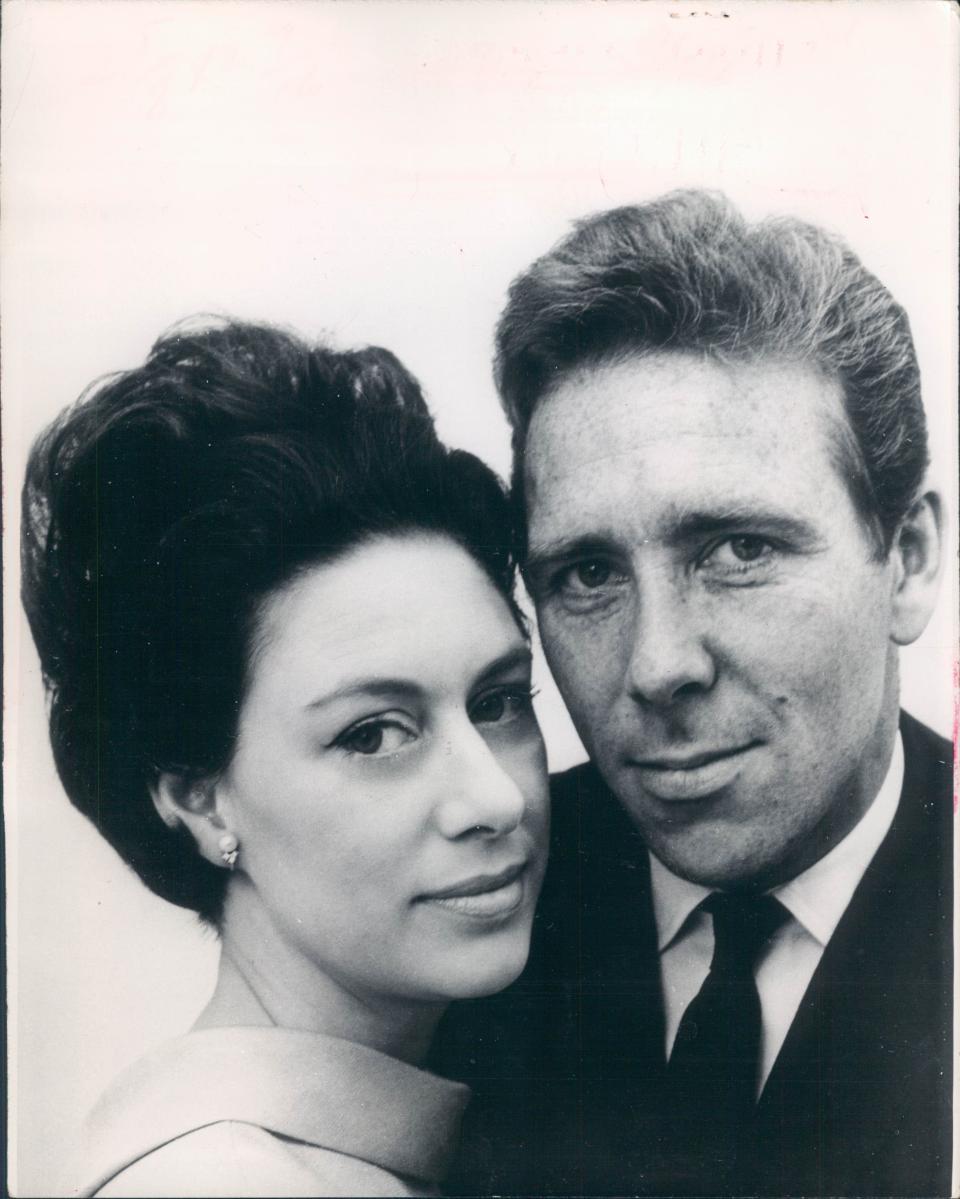
When word leaked that Detroit cops had taken Queen Elizabeth’s brother-in-law into custody, calls from news organizations around the world flooded the switchboard at police headquarters.
Luckily for the DPD, it was custody lite. The cops loved him.
“Usually, when we arrest someone, we put on cuffs. But he was cooperative and so friendly that we didn’t,” Officer George Aubrey explained at the time.
En route to the station, their prisoner asked the officers to stop so he could shoot another photo ― and they agreed to stop.
Once at 1300 Beaubien, Tony cleared up everything. His brief visit ended happily with a chat with Police Chief Philip Tannian.
Still, the royal hullabaloo was not what two young cops expected when they showed up for work that day. Speaking to a reporter later, Officer Aubrey ruefully reflected on how an ordinary encounter on a Detroit street had become an international incident.
“Out of 3 million people, we had to pick him up?” he asked.
What was an earl doing in Detroit?
In 1974, the Sunday Times of London was one of the world’s most prestigious and ambitious newspapers.
So it was no surprise its magazine would dispatch a reporter and photographer to Detroit to report on America’s “urban crisis” and the city’s first Black mayor, Coleman Young.
The reporter was Stephen Aris, an accomplished journalist and author. The photographer was Antony Charles Robert Armstrong-Jones.
Recognized as a leading portrait paparazzo, Armstrong-Jones also freelanced in the dog-eat-dog world of Fleet Street newspapers. The credit line that accompanied his photos said simply, “Snowdon.”
Snowdon was 43 when he visited Detroit. He and Aris kept a low profile at first, asking people who figured out Snowdon’s real identity to keep it quiet because, Aris told the Free Press, “it interferes with the work.”
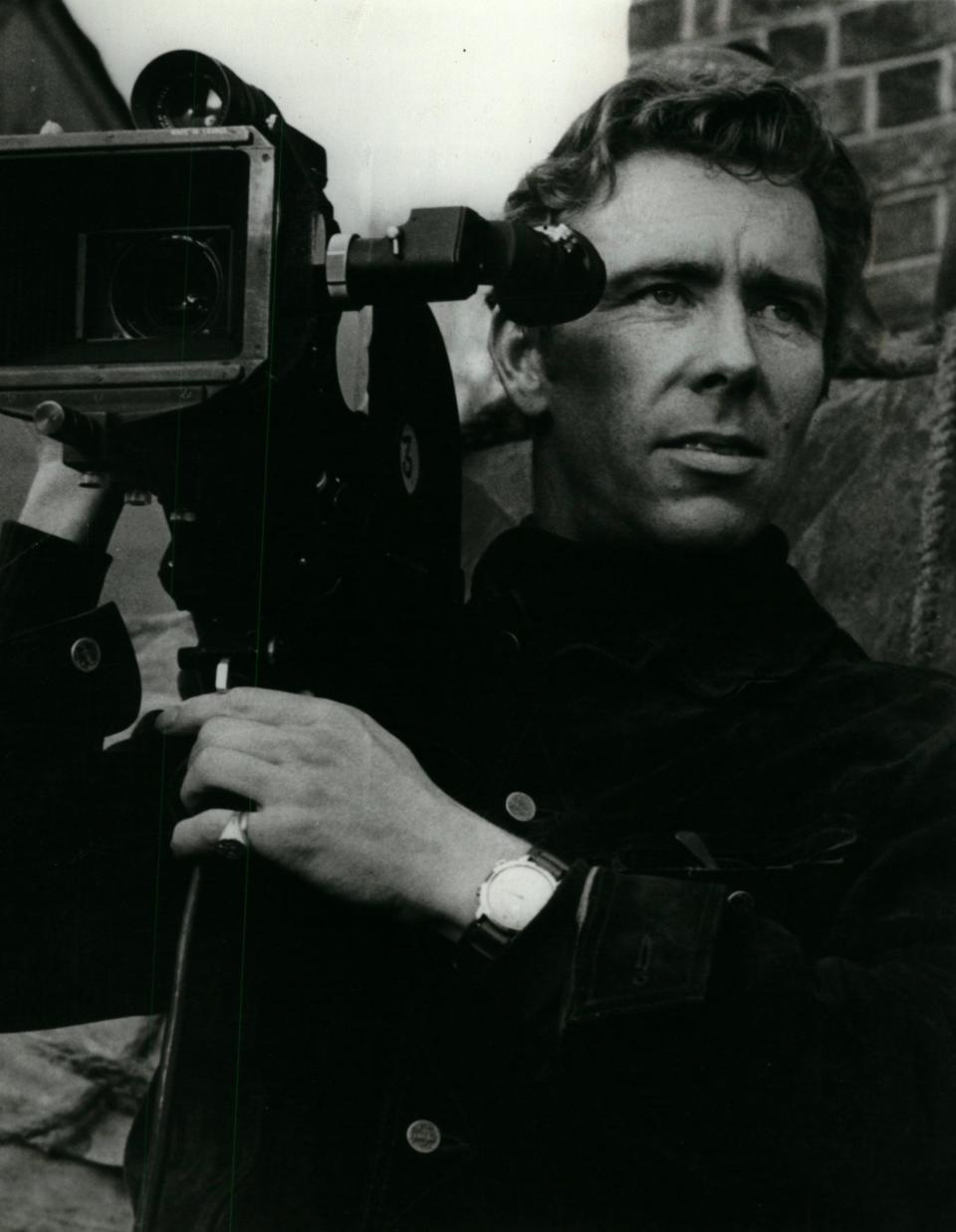
Snowdon went unrecognized at the funeral of Officer Edward Pakula, a Detroit cop shot and killed in the line of duty. He got a compelling shot of a grim-faced Young, in office for only three weeks, walking in a street procession with other officials. Young’s office earlier had turned down a request for a formal interview, unaware one of the journalists from the London paper was a dashing earl.
Before his cover was blown, a Free Press police reporter noticed Snowdon downtown and was intrigued by his cameras, apparel and unforgettable face.
“He had two good Nikons around his neck and his clothes looked expensive,” she told a colleague. “Green suede pants and a black shirt, and freckles through the suntan and very, very blue eyes.”
For their story, Aris and Snowdon covered a lot of ground, from the Hunters Ridge apartment complex in Farmington Hills to the east-side turf along Mack Avenue of Frank Ditto, a controversial community organizer.
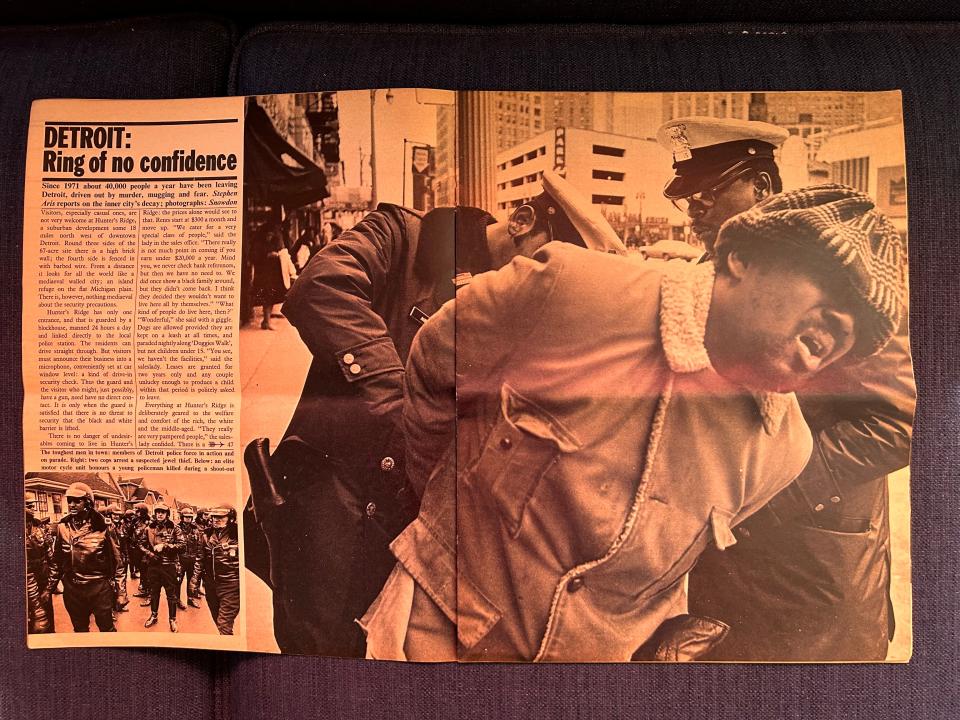
Their story called Detroit the “largest center of black power in America,” but they caught the metro area as polarization was peaking, and their overall take was bleak.
Aris described high-security Hunters Ridge as looking “for all the world like a medieval walled city,” which fed into the story’s theme, the deepening estrangement between the downward-spiraling city and the white, paranoid, prosperous suburbs.
Fear of crime in Detroit, the Sunday Times told its vast audience, “is the main talking point at cocktail parties and Sunday morning brunches in suburban Grosse Pointe and Bloomfield Hills. Tales of robberies, muggings, rapes and murders have become the small change of polite conversation. A well-dressed housewife, the mother of three children, confesses that she has not been downtown in five years.”
Snowdon’s aggressive tactics in capturing the sights of Detroit were typical for members of the feisty British press. And The Sunday Times gave his black-and-white pictures the full-page display that newspaper photographers today would die for.
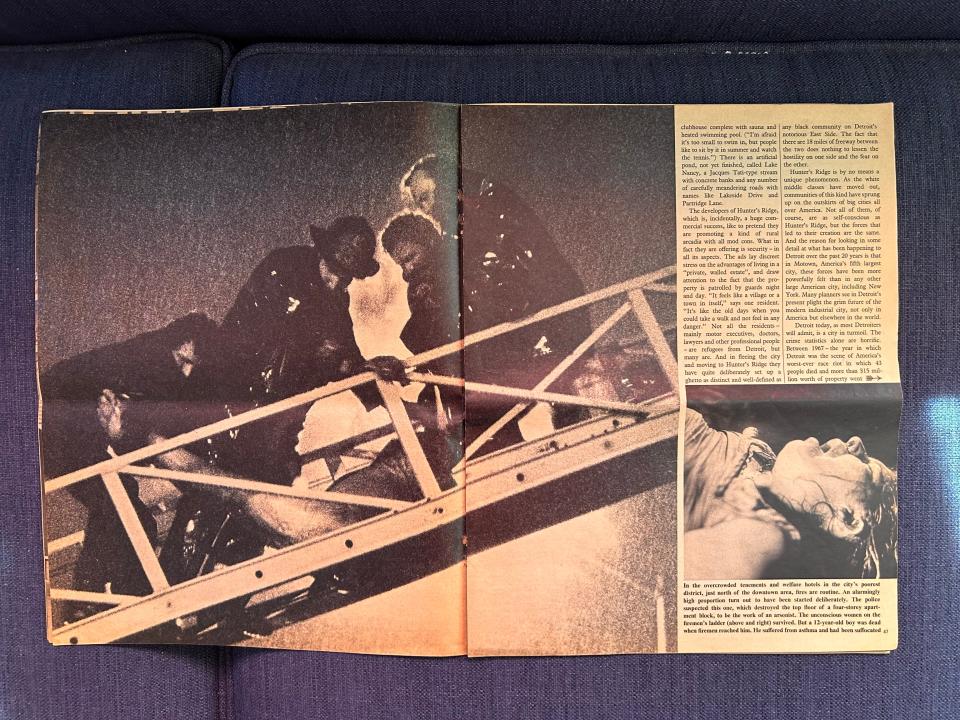
On the scene of an apartment fire in the Cass Corridor, Snowdon captured firefighters on a ladder pulling an unconscious woman out of the blaze. She survived, but a 12-year-old boy did not. The magazine carried a close-up photo of his lifeless upper body, the kind of cinéma vérité that American papers largely avoid.
Snowdon does Detroit
Snowdon had fun off the clock, too.
The Free Press saw an opportunity. It assigned a young female reporter, Detroiter Toni Jones, to take Londoner Tony Jones out for a night on the town. Toni Jones brought a friend, and Aris came along, too. Jones, err, Snowdon, was a good sport. Toni Jones described him in her story as modest, easygoing and witty.
They hit several long-gone night spots. At Lafayette Orleans in Lafayette Park, Snowdon met Kenneth Cockrel, the famous attorney, and appeared not to notice when a patron began heckling the band. At Watts Club Mozambique on Fenkell, Snowdon was introduced to Pistons forward Don Adams.
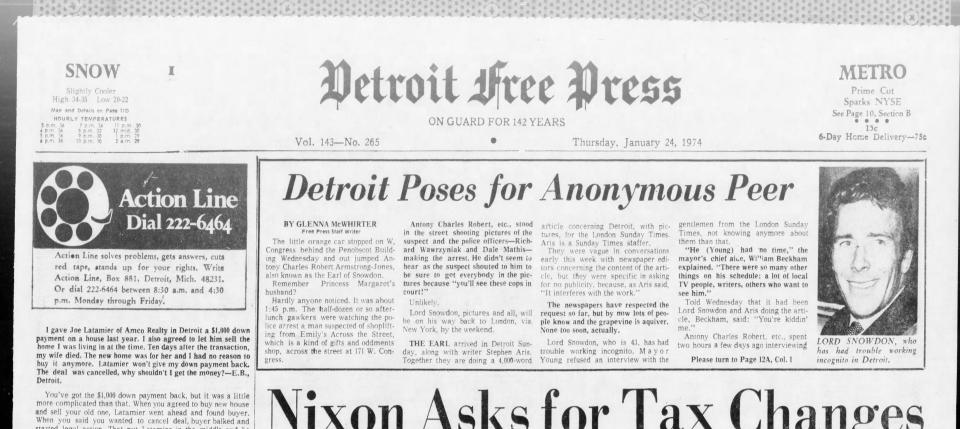
At the bar on Livernois Avenue, formerly owned by Mayor Young, the party was greeted warmly by the mayor’s brother, Charles, and given a slab of ribs.
“Livernois sounds like something that ought to be sold in a pharmacy,” Snowdon said.
Word about the run-in with Detroit police was not public, but Snowdon told Toni Jones about it ― off the record, he hoped. Back at the paper, though, after Jones mentioned it to an editor, the Free Press published a story.
In a recent interview from her home in New Jersey, Jones, 76, recalled Snowdon as “very personable, easy to talk to. He was lovely. He was really a nice guy.”
A native Detroiter who attended Cass Tech and Wayne State University, Jones said her evening with Snowdon and Aris was a “mind-blowing experience.”
That’s why she still feels bad she let the cat out of the bag about his encounter with the DPD, as innocent as it turned out to be.
“I blabbed,” she said. “I felt really, really, bad about it. The story blew up. I’m hoping he wasn’t too upset.”
Bill McGraw is the editor of Free Press Flashback
This article originally appeared on Detroit Free Press: Antony Charles Robert Armstrong-Jones was in custody of Detroit police

